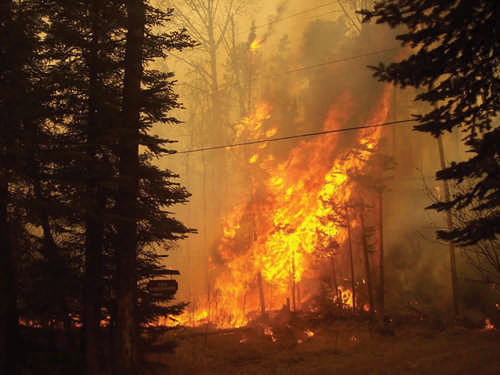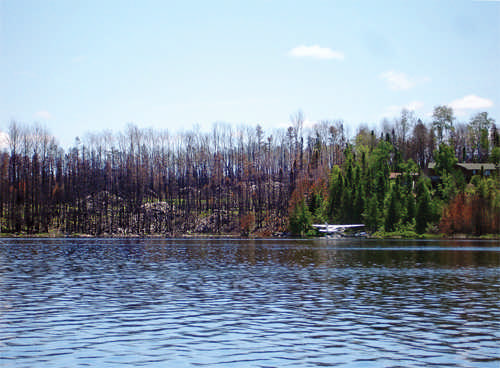But a forest fire roared through our cabin community this spring. And no, they couldn’t get it under control.
Our cabin lies on the edge of the Boundary Waters Canoe Area Wilderness, a 1,029,000-acre area that’s part of a national forest. In 1999, a severe windstorm downed myriad trees in an area of 477,000 acres. Much of the deadfall remains. Over the years, it became a tinder dry fuel load waiting to explode.
This spring, it did exactly that.
My wife and I went up to our cabin on May 1 to get things ready for summer. While there, we started our pump down by the lake to test our wildfire-protection sprinkler system. It worked perfectly. Thank goodness it did.
A few days later we were at our primary home, 200 hundred miles away from our cabin, when we heard the news that a small fire had been spotted in the region of our cabin and lake. We weren’t too worried at first because we heard no structures were threatened, and the fire was quite a distance from our place. But we became increasingly alarmed as the fire spread rapidly, and firefighters weren’t able to contain it.
We watched helplessly from home through the TV news coverage as the fire exploded and swept like a tornado through our area – and beyond into Canada – across more than 75,433 acres of prime forest and lake habitat. It forced a massive evacuation of our entire cabin area for more than two weeks.
Our friends and neighbors started the water pump for our sprinkler system the afternoon that the evacuation began. (The pump is driven by L.P. gas and requires someone to start it well before the fire gets there.) With wildfire sprinklers, it’s important to build up the moisture content in the air and on the land and buildings well before the fire arrives.
The next morning, the fire hit our cabin with its full force. The sprinkler system, which had been running now for more than half a day, had built up an extremely high moisture volume in a complete circle around our cabin and nearly all the outbuildings. When the fire hit that dome of moisture and humidity, it went up and over the cabin and left nary a mark on the buildings!
The fire then raged down the shoreline, and I’m very sad to say, burned down the places of many of our friends and neighbors who were without sprinkler systems. It leaped across about a half mile of water to burn some big islands and a wilderness camp on the other side of the lake.
In addition to burning over 75,000 acres, it destroyed 160 cabins and outbuildings before it was contained.
After a few weeks, the evacuation orders were lifted, and still-shocked cabin owners were allowed back into the area to survey the damage.
Tragically, many members of our cabin community returned to charred trees and a pile of ashes that had once been their cabins and wooded property. It was devastating to see so many neighbors and friends whom we’ve known for years lose so much.
We were one of the lucky families whose property had been mostly spared, due entirely to the sprinkler system and the efforts of neighbors and firefighters who kept it running throughout the fire. (Our pump ran so long that it finally burned out for lack of an oil change. Firefighters saved our cabin when they switched another pump onto our line.)
Everything within the diameter of the sprinkler system – with its 14 circularly arranged sprinkler heads – was spared, even the wildlife and vegetation. There is a small green circle of lush vegetation around our cabin in contrast to the black ugly charred forest beyond.
Our damage was minimal compared to others. One small garage burned to the ground (it was outside the diameter of the sprinkler system). Some of the vinyl siding on the corner of the big garage melted. There was some water damage inside the cabin, and the refrigerator/freezer had to be replaced (No electricity for several weeks makes for a very unpleasant refrigerator experience). The roof will have to be replaced due to burns that the sprinkler extinguished. But all of this was nothing compared to the catastrophe that many of our neighbors experienced.
The power, speed and force of this wildfire was awe-inspiring and devastating. Luckily, no lives were lost in this raging wildfire. And our neighbors have vowed to rebuild.
Am I now a believer in the necessity of sprinkler systems for remote cabins? I’m not only a believer; I’m now a disciple! There are miracles in this world. Our cabin’s survival is definitely one of them.
Lars F. has refused the 12-step plan to control his cabinitis. Only his first name is used to protect his identity.





